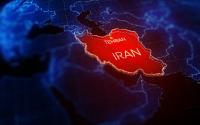21 February 2005Ventura County StarBy John Krist
Bruce Molnia poked a button and the projector screen filled with a striking black-and-white image of Alaska's Muir Glacier, long a favorite subject for camera-toting tourists. Taken in 1941, the photograph depicts a stark landscape in which peaks and ridges of naked rock jut through a monstrous slab of jagged ice nearly half a mile thick.
Molnia clicked the remote and another photograph flashed on the projection screen, shot from the same spot as the previous one but 63 years later. In the 2004 picture, the massive river of ice is gone, a broad bay of milky blue water having taken its place. The peaks and ridges, visibly scarred by the glacier's work, are now clothed by dense stands of alder and spruce.
Muir Glacier still exists -- its iceberg-calving face is a popular destination for kayakers and cruise ships -- but it has retreated more than 25 miles over the past century, said Molnia, a research geologist with the U.S. Geological Survey. The same thing has happened to glaciers throughout Alaska. The landscape itself, Molnia said, has gone "from black and white to blue and green."
Climatologists have been cranking out articles and reports by the truckload for more than a decade in an effort to warn policymakers and the public that the Earth's climate is warming at a troubling pace, with consequences that will be particularly profound in California and the West: coastal flooding, a heightened risk of drought and wildfires, diminished water supplies.
In their direct simplicity, however, the photographs Molnia has assembled may prove more persuasive to nonscientists than any number of charts, diagrams, formulas and satellite data plots.
"The only rational scientific explanation for the retreat of these simple glaciers is a change in climate," said Matt Nolan, an associate research professor at the University of Alaska in Fairbanks. "Whether the change is anthropogenic is debatable, but there's no doubt that it's occurring."
'Unambiguous proof' requested
The paired images of Muir Glacier, at the north end of Glacier Bay National Park and Preserve, were among a series of photos unveiled Dec. 16 during the American Geophysical Union's fall meeting in San Francisco. Joining Molnia and Nolan for the presentation was Kenneth D. Tape, a research technician at the University of Alaska.
Molnia, who was chiefly responsible for assembling the photographic catalog, said he launched his project after a senior administrator in the Department of Interior asked him to find "unambiguous proof of climate change."
It was a bold and daunting request. Most scientists agree global climate is in continuous flux; Earth has alternated between snowball and sauna repeatedly throughout its long history. The debate is loud and intense, however, over how much and how rapidly the planet is warming now, the degree to which human beings might be contributing to that change, and what -- if anything -- should be done about it.
The broad consensus among thousands of climate experts worldwide is that the planet is growing warmer at an unprecedented pace, and that emissions of carbon dioxide and other greenhouse gases from factories, automobiles, power plants and other human sources are helping drive that trend.
A small but vocal minority of climate researchers, many of them associated with organizations supported by industries dependent on fossil fuels, argue that the data are too ambiguous to predict future global temperatures. Even if the planet is warming, they argue, there's no conclusive evidence that human activity is to blame.
Molnia had a hunch about where to look for the "unambiguous proof" of change his boss was seeking. The quest led him to the photographic archives of his employer, as well as those of the National Park Service and other agencies, and eventually to the riverbanks, mountain slopes and coastal plains of Alaska itself.
Federal archives contain more than 1,000 photographs of Alaskan glaciers taken before 1920, Molnia said. Over the past few years, he has visited more than 100 of the sites where those photographs were taken and has reproduced many of the shots.
The landscape has responded
What Molnia found was a dramatic and incontrovertible illustration of how Alaskan glaciers have changed -- and how the landscape has responded -- over the past century. For the most part, the repeat photographs document a radical retreat, shrinkage and disappearance of the great rivers of ice that shaped the modern Alaskan landscape.
Click. A photo of McCarty Glacier in 1909, its snout poking into tidewater. Click. A shot of ice-free McCarty Fjord in 2004, the glacier having retreated 20 miles. Click. A panoramic shot of Queen Inlet in 1906, when it was a small bay with the calving front of Carroll Glacier protruding into it. Click. A photo of Queen Inlet, now a sediment-filled basin with a thin slab of rotting ice on its shoreline.
Not all the glaciers in Alaska are shrinking. One percent to 2 percent are actually growing, Molnia said. Those, however, are glaciers fed by high-elevation snowfall, which has not changed much over the past century. At lower elevations, winter snowfall has diminished since the late 1800s. That decrease, coupled with the average temperature increase of about 3 degrees in the Arctic, has upset the delicate balance that keeps a river of ice alive.
As the temperature has risen and the ice has receded, vegetation has established a new foothold, according to Tape, whose research has focused on changes in plant cover on Alaska's north slope.
His analysis indicates that shrub cover has increased 39 percent in the low-elevation valley slopes, flood plains and river terraces. Formerly treeless tundra now supports alder, willow and birch.
"When you see change of this scale ... in a geological blink of an eye, you need to look for a large-scale perturbation in the system," he said. "In this case, that perturbation is a change in climate."
Signals from the Arctic
The shrinkage of Alaskan glaciers depicted in the photographs is but one signal of climate change coming from the Earth's frozen landscapes. Glaciers are in decline throughout the world, leading researchers to predict a future that looks very different from the present if current rates of melting continue: no ice below 6,500 feet in the European Alps by 2050; all the glaciers in Montana's Glacier National Park gone within 25 years; most of the glaciers in Washington's North Cascades gone by 2050. California's Sierra Nevada contains nearly 500 glaciers and perennial ice patches, most of them tiny and most of them shrinking rapidly; many have vanished in the past two decades.
In November 2004, an international research consortium released its 1,200-page "Arctic Climate Impact Assessment," which describes a host of climate-related changes and their effect on the plants, animals and human beings who live in the Arctic or use it as a source of food, energy and other resources.
The report was prepared under the auspices of the Arctic Council and the International Arctic Science Committee. The Arctic Council is an intergovernmental forum that includes Canada, Denmark, Finland, Iceland, Norway, the Russian Federation, Sweden, and the United States. The science committee is a nongovernmental organization that coordinates research in all areas of the Arctic region.
"The Arctic is now experiencing some of the most rapid and severe climate change on Earth," the report says. "Over the next 100 years, climate change is expected to accelerate, contributing to major physical, ecological, social, and economic changes, many of which have already begun. Changes in arctic climate will also affect the rest of the world through increased global warming and rising sea levels."
The effects of global climate change are amplified in the northern latitudes, for reasons that are only now being understood. Melting glaciers and diminished sea ice accelerate warming in the Arctic by exposing large areas of dark water and land, which absorb more solar energy than reflective ice.
Warming is also more pronounced in the Arctic because of natural circulation patterns in the atmosphere and oceans that transfer thermal energy from equatorial regions to the poles. The atmosphere is thinner at the poles, so it heats up more rapidly there than elsewhere.
"Arctic average temperature has risen at almost twice the rate as the rest of the world in the past few decades," said Robert W. Corell, the chairman of the Arctic Climate Impact Assessment, during testimony Nov. 16 before the U.S. Senate Committee on Commerce, Science and Transportation. "Widespread melting of glaciers and sea ice and rising permafrost temperatures present additional evidence of strong arctic warming."
Snow cover in the Arctic has decreased 10 percent in the past 30 years, according to the report. The average extent of summer sea ice has decreased 15 percent to 20 percent in the same span. Delayed onset of freezing temperatures and earlier arrival of spring have shortened the season during which lakes and rivers are frozen by up to three weeks. Permafrost thaws earlier and the thaw zone extends deeper into the ground, destabilizing roads, train tracks, pipelines and buildings constructed atop once-solid ground that turns into a sloppy mush when it thaws.
Winners and losers
As the Arctic warms, according to the report, tundra will retreat and forests will move north or shrink. Plants and animals dependent on tundra will diminish or vanish.
Cold-water fish species, many of them commercially valuable, also will decline. Forest fires in the boreal region, once rare, will increase in frequency and intensity, and insect pests may expand their ranges. Marine species dependent on sea ice, such as polar bears, seals, walruses and some birds, may face extinction.
For human beings, the effects of arctic warming will be mixed. For native subsistence hunters, loss of ice and the wildlife associated with it already are causing hardship, decreasing their food supply and making it harder to travel.
Industrial nations will find new ice-free shipping lanes and easier access to offshore energy reserves. Transportation on land, however, will become more difficult, as frozen ground and ice are replaced by mud and bogs. Rising sea level driven by melting ice will threaten coastal communities worldwide.
Beyond the Arctic, a warming climate is expected to cut significantly into the West's water supply by diminishing the size of the winter snowpack in the Sierra Nevada, Rocky Mountains and Cascade Range, and reducing the amount available as runoff during the long annual dry season.
Scientists also predict warming will increase the frequency and severity of drought, and encourage the spread of tree-killing insect infestations, setting the stage for more frequent and more severe wildfires across the West.
Threats to state's water supply
Climate experts also predict that melting ice and warming oceans will cause sea level to rise about 1.6 feet over the next century along the California coast, threatening to inundate low-lying communities and posing two major threats to the state's water supply: It will increase the intrusion of saltwater into shallow coastal aquifers such as those under the Oxnard Plain, and it also might contaminate the state's most important source of water, the Sacramento-San Joaquin River delta.
There's no shortage of arcane graphs, charts and reports attempting to quantify climate trends, project their likely trajectory and describe their effects. To Molnia and his colleagues, however, the easiest place to start grappling with the subject is a simple series of photographs.
"You don't need a background in science," Nolan said. "This is something visual that everyone can understand."






